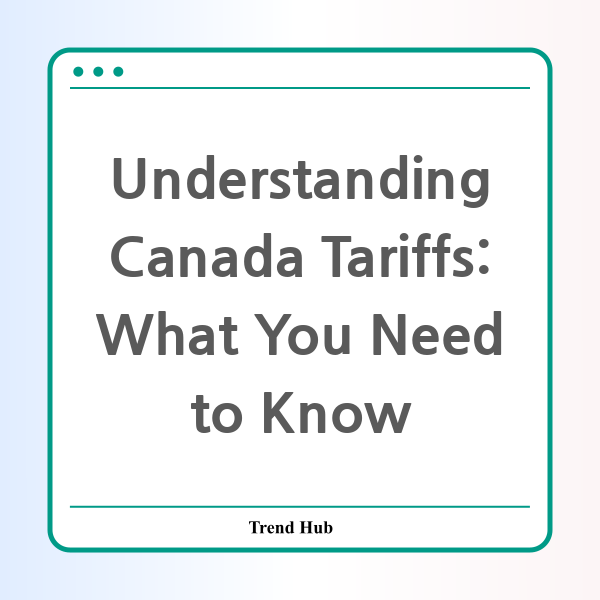* This website participates in the Amazon Affiliate Program and earns from qualifying purchases.

Are you prepared for the potential changes brought by tariffs on goods imported from Canada? With the ongoing discussions about tariffs, it’s essential to understand how these changes could impact your wallet and the economy as a whole.
Tariffs are taxes imposed on imported goods, designed to encourage the purchase of domestically produced items by making foreign products more expensive. Recent statements from the U.S. administration suggest that significant tariffs on Canadian imports may soon take effect, with President Trump signaling that a range of products could be targeted. But what does this mean for consumers?
What Are Tariffs?
In simple terms, tariffs are a tool used by governments to control trade. By imposing taxes on imported goods, countries can protect their domestic industries from foreign competition. In theory, this leads consumers to buy more local products, stimulating the economy. However, the reality can be more complex.
For instance, tariffs can lead to higher prices for consumers, especially if a large portion of goods is imported from countries like Canada. If tariffs are placed on automotive products, food, or electronics, consumers can expect to pay significantly more at checkout as companies pass on these costs to buyers.
Current Tariff Proposals
Recent proposals indicate that tariffs could reach as high as 25% on certain products imported from Canada. This includes various items from pharmaceuticals to steel. Such actions could not only disrupt trade flows but also lead to increased prices on everyday products. For example, heavy tariffs on cars could add several thousand dollars to the price of new vehicles, making transportation more expensive for many families.
Additionally, the introduction of tariffs could disrupt trade agreements and lead to retaliation from Canada, resulting in a trade war that may escalate to affect a broad range of goods.
The Economic Impact of Tariffs
Economists warn that while tariffs may temporarily boost domestic production, the overall impact on the economy can be detrimental. Increased costs for imports lead to inflationary pressures, which mean that consumers must pay more for both imported and domestic goods as producers adjust their pricing strategies.
Studies have shown that tariffs may result in economic shifts, with U.S. households potentially facing a $272 billion annual tax burden as costs rise across various sectors. This is especially concerning for lower-income households, where a larger portion of their budget is spent on essentials.
Are Tariffs Effective?
There’s an ongoing debate about the efficacy of tariffs. Some argue that they can protect local jobs and stimulate domestic manufacturing. However, others contend that such policies can provoke retaliation from trade partners and lead to a decrease in overall economic growth. The potential for trade wars looms large, and historical examples illustrate that a tit-for-tat approach to tariffs often leads to negative outcomes for consumers and businesses alike.
Preparing for Changes
As the situation develops, it’s crucial for consumers to stay informed and prepared for changes in pricing and availability of goods. Here are a few tips:
- Stay updated on tariff announcements and what products could be affected.
- Consider altering purchasing habits; explore local alternatives to goods that may see price increases.
- Monitor financial news for analysis on how tariffs may affect the economy and individual purchasing power.
In conclusion, while the intent behind tariffs may be to bolster the U.S. economy, their broader implications could be significant for consumers. Understanding these dynamics will empower you to make informed decisions in the coming months as the situation unfolds.
* This website participates in the Amazon Affiliate Program and earns from qualifying purchases.